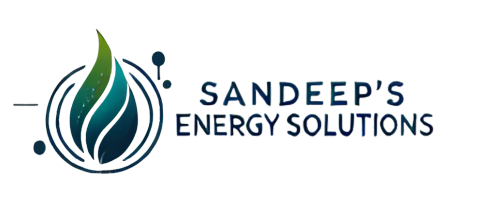Aviation Fuel

Jet Fuel Overview
Jet fuel, also known as Aviation Turbine Fuel (ATF) or Avtur, is specifically formulated for aircraft with gas-turbine engines. Its appearance ranges from clear to a pale straw color. The primary fuels used in commercial aviation are Jet A and Jet A-1, which adhere to strict international specifications. Another common type, Jet B, is primarily utilized in situations requiring superior cold-weather performance due to its specialized composition.

Composition of Jet Fuel
Jet fuel is a complex blend of numerous hydrocarbons. Kerosene-based fuels, such as Jet A and Jet A-1, consist of hydrocarbons with carbon chains ranging from 8 to 16 atoms per molecule. On the other hand, wide-cut or naphtha-based fuels like Jet B have a carbon number distribution spanning from 5 to 15 atoms per molecule.
Specialized Nature of Aviation Fuel
Jet fuel is a petroleum-derived product designed exclusively for aviation applications. Its quality standards exceed those of fuels used in less critical scenarios like heating or transportation. Additionally, aviation fuel often includes additives to minimize risks such as icing or explosions under extreme conditions, ensuring safety and performance in high-stakes environments.
American Civil Jet Fuels
In the United States, civil jet fuels are governed by the ASTM Specification for Aviation Turbine Fuels (D 1655), which outlines the requirements for three key grades.
A kerosene-based fuel with a maximum freeze point of -40°C, predominantly used by domestic and international airlines in the U.S.
- A wide-cut fuel valued for its lower freeze point and higher volatility, though it is now primarily found in northern Canada for its cold-weather advantages.
UK Jet Fuels
Originally developed as a military jet fuel, the UK adopted D. Eng RD 2494 as its civil jet fuel standard. This specification, now known as DEF STAN 91-91, governs the use of Jet A-1, a kerosene-based fuel with a maximum freeze point of -47°C. While similar to ASTM D 1655’s Jet A-1, DEF STAN 91-91 has slightly more stringent requirements in certain areas.
Chinese Jet Fuels
China’s current specifications cover five types of jet fuel, transitioning from the RP designation to simpler numeric naming conventions: No. 1 (RP-1): Kerosene with a freeze point of -60°C and low flash point (28°C). No. 2 (RP-2): Similar to No. 1 but with a freeze point of -50°C. No. 3 (RP-3): Equivalent to Western Jet A-1 and the primary export grade. No. 4 (RP-4): A wide-cut fuel akin to Western Jet B. No. 5 (RP-5): A high flash point kerosene used by naval aircraft on carriers. Today, almost all jet fuel production in China focuses on No. 3 Jet Fuel (RP-3).
Former Soviet Union and Eastern European Jet Fuels
In the former Soviet Union, jet fuels are produced under a range of specifications reflecting diverse crude sources and processing methods. These grades, such as T-1, T-8, TS-1, and RT, are defined by either State Standard (GOST) or Technical Condition (TU) numbers.
- TS-1: The principal grade, featuring a low freeze point (approximately -57°C by Western standards) but a lower flash point of 28°C, compared to 38°C in Western fuels. It is widely accepted as equivalent to Jet A-1.
-RT (PT in Russian script): A hydrotreated, higher-quality grade, though less commonly produced.
Eastern European countries have adopted national standards, some aligning closely with Russian specifications, while others cater to international airline requirements similar to Western Jet A-1.
International Specifications – AFQRJOS Checklist
The increasing complexity of jet fuel supply chains, including co-mingling in shared storage systems, led to the creation of the Aviation Fuel Quality Requirements for Jointly Operated Systems (AFQRJOS) Checklist. This document consolidates the most stringent requirements of DEF STAN 91-91 and ASTM D1655 specifications for Jet A-1. The AFQRJOS Checklist is recognized by major aviation fuel suppliers, such as BP, ExxonMobil, Shell, and Total, as the benchmark for supplying civil aviation fuels outside North America and the former Soviet Union.
Other National Civil Jet Fuel Specifications
Many nations base their jet fuel standards on U.S., UK, or Soviet specifications, often with minor adjustments. Efforts are ongoing to harmonize these standards, particularly between ASTM and DEF STAN specifications, to reduce differences and improve global consistency.
Civil Jet Fuels
Aviation turbine fuels are used to power jet and turboprop aircraft, distinct from Avgas. Globally, commercial aviation relies mainly on two kerosene-based grades: Jet A-1 and Jet A. A third grade, Jet B, is a wide-cut blend of kerosene and gasoline, primarily used in extremely cold climates due to its superior cold-weather performance. Jet A-1: A kerosene-based fuel suitable for most turbine engines. It has a flash point above 38°C (100°F) and a freeze point maximum of -47°C. Jet A-1 is widely available outside the U.S., meeting stringent international standards like DEF STAN 91–91 (UK), ASTM D1655 (U.S.), and NATO Code F-35. Jet A: Similar to Jet A-1 but with a higher freeze point of -40°C, Jet A is mainly used within the U.S. and conforms to ASTM D1655. Jet B: A naphtha-kerosene distillate, offering better cold-weather performance but higher flammability. It is used in limited regions, such as Canada, under the CAN/CGSB 3.23 specification.
Military Jet Fuels
Military jet fuels are tailored for specific applications and include additives for corrosion inhibition and anti-icing. Key grades include: JP-4: Equivalent to Jet B, with additives, and meeting U.S. Military Specification MIL-PRF-5624S Grade JP-4 and NATO Code F-40. JP-5: A high-flash-point kerosene fuel conforming to MIL-PRF-5624S Grade JP-5, used for naval aircraft. NATO Code F-44. JP-8: Comparable to Jet A-1, enhanced with additives, meeting MIL-T-83188D and NATO Code F-34. JP-9 & JP-10: High-performance fuels designed for missiles, with JP-10 being more advanced, offering a lower operational temperature limit of -54°C.
Jet Fuel Grades and Myths
Contrary to misconceptions, “JP54” is not an official fuel designation but refers to Colonial Grade 54, a kerosene specification often confused with Jet A or Jet A-1. It is neither traded as a standalone commodity nor listed on exchanges. Airlines typically purchase Jet A or A-1 with additives tailored to operational needs, such as anti-icing agents to mitigate issues like ice crystal formation at high altitudes.
Jet Fuel Characteristics
Jet fuels have a boiling range of 150–270°C, falling between gasoline and diesel used for road vehicles. They represent 10–15% of a refinery's output, amounting to approximately 3,000 tonnes daily for a medium-sized facility.
Platts Jet Fuel Price Index
The Platts Jet Fuel Price Index tracks global jet fuel prices using spot assessments from regional trading hubs. These prices are weighted based on trading volume and uplift data. The index compares current prices to a 2000 baseline, with a value of 200 indicating a doubling since that time. The methodology and data remain proprietary to Platts, a division of McGraw-Hill.
